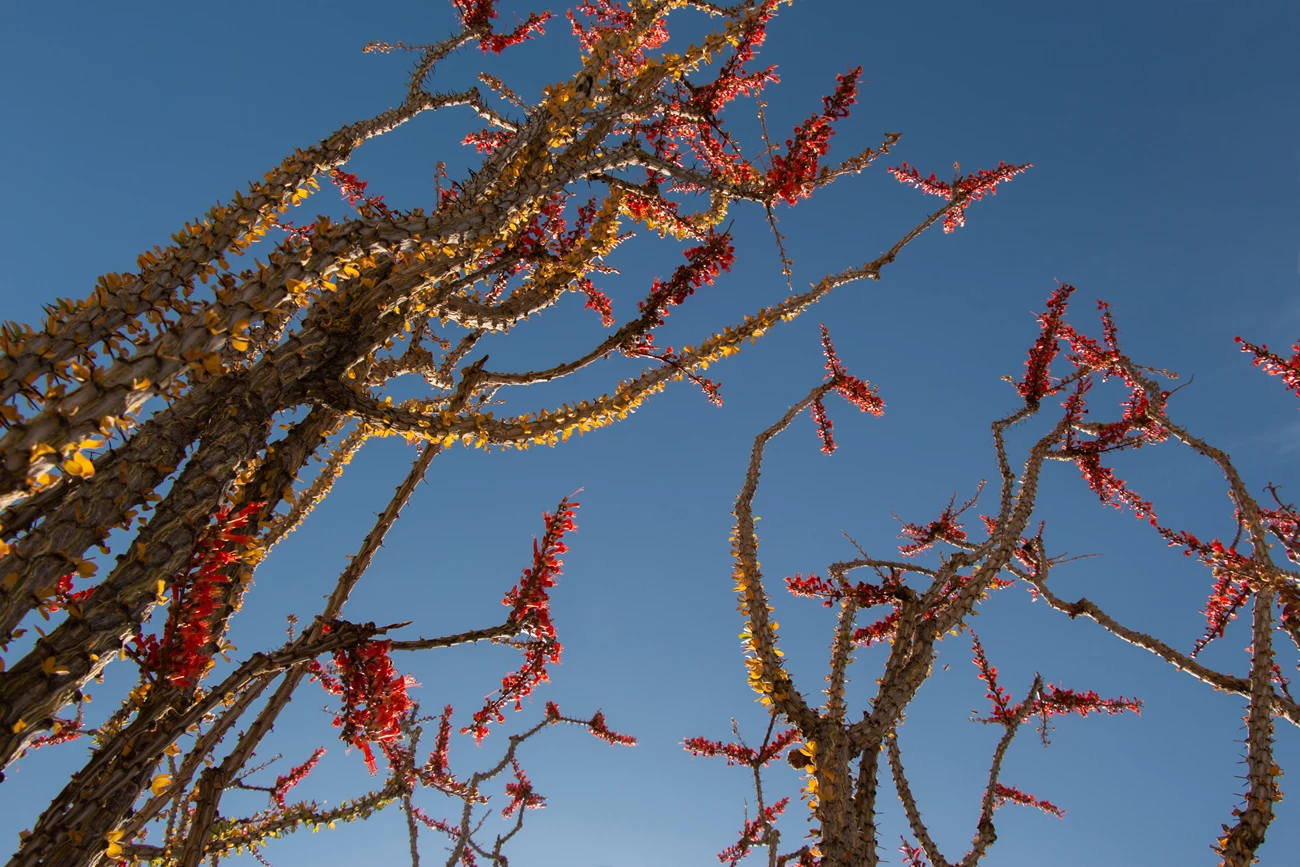
NPS/Paul Martinez The Ocotillo: Adaptation in ActionIn the wide-open desert valleys of Joshua Tree National Park; specifically in the lower, warmer Colorado Desert, you will spot tall, spiny green branches reaching skyward. These are Ocotillos (Fouquieria splendens), one of the more distinctive and adaptive plants in the park. Though they may look like cactus, Ocotillos are not cacti at all. They belong to their own unique family and occupy a space between shrub and succulent, thriving in the driest conditions and springing to life after rainfall. A Plant of ContrastsOcotillos spend much of their time appearing dormant. Bare, gray stems with no leaves. But with rain, even just a brief desert sprinkle, they respond quickly. In just a few days, vibrant green leaves unravel along their spiny stems, creating an almost overnight transformation. This ability to go from “bare” to “lush” makes Ocotillos a visually dynamic plant in the desert. After blooming, the leaves often fall off again, allowing the plant to conserve moisture and ride out the next dry spell. 
NPS/Paul Martinez Spring’s Fiery DisplayIn spring, especially March through May, Ocotillos send out bright red-orange flowers at the tips of their stems. These blossoms are rich in nectar and are a favorite among hummingbirds, who are active through the park during this time. Bees and butterflies also visit, adding even more movement and life to the desert landscape. The flowers not only serve pollinators, but they also light up the Pinto Basin and other lower elevation areas with bursts of color that contrast against the pale earth and blue sky. Rooted in SurvivalOcotillos are experts in adaptation. With a shallow but widespread root system, they soak up as much moisture as possible during infrequent rains. Their stems are coated in a waxy surface that reduces water loss, and their spines help deter herbivores while also minimizing air flow around the stem, reducing evaporation. In this way, the Ocotillo survives in places where few others can. Where to Spot Ocotillos in the ParkOcotillos are most commonly found in the southern part of Joshua Tree National Park, particularly in the Pinto Basin and Cottonwood regions, where the lower elevation and Colorado Desert influence create ideal conditions. Some of the best places to see large clusters of ocotillos include the Ocotillo Patch along Pinto Basin Road, as well as the Mastodon Peak and Lost Palms Oasis trails—areas known for their abundance of these striking desert plants. In spring, especially following a good winter rain, these landscapes come alive with blooming ocotillos, desert dandelions, and other wildflowers, offering one of the park’s most vivid seasonal displays. A Living Symbol of the DesertThe Ocotillo reminds us that desert life is anything but barren. In a land of extremes, it thrives; not by resisting the conditions, but by responding to them with patience and grace. Next time you spot an Ocotillo, whether it’s standing bare against the sky, dotted with hummingbirds, or glowing red at the tips... pause to appreciate its quiet resilience. |
Last updated: June 3, 2025
